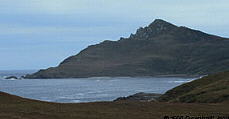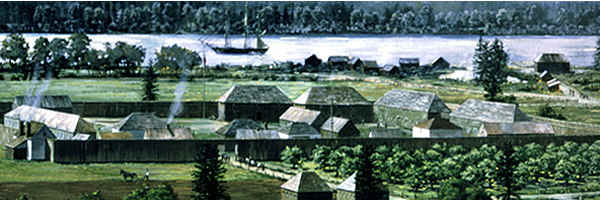
1843

On his return in St. Louis Father De Smet makes time to put his colourful adventures on paper. These letters are joined to become his first book: Letters & Sketches, with has Narrative of has Year's Residence among the Indian Tribes of the Rocky Mountains. The English version is published in Philadelphia. Translations in French, German, Dutch and Italian are to follow. The publication comes at the right time as it will help to make his missionary work among the north-western tribes known to a greater audience. It slowly dawns on De Smet that in order to establish a successful catholic mission in the Rockies, the Jesuits will require a considerable amount of resources. He will have to solicit more aid in Europe. But first he will attempt to find more financial support for his plans in the U.S. He visits New Orleans, Boston, Louisville, Cincinnati, Pittsburgh, Baltimore, Washington, Philadelphia and New York and pockets not less than 5.000 dollars.
De Smet also manages to convince his superior, Father Verhaegen, to send more missionaries to the Rockies, and as a result on the 25th of April he is able to accompany De Vos, Hoecken and Mac Gaen on the John Auld as far as Westport. The steamship sails with the Omega of captain La Barge. The trip from St. Louis to Westport takes approximately eight days. John James Audubon and Etienne Provost are among the passengers of the Omega. De Smet meets these gentlemen when both ships stop at the supply points. In Westport the Jesuits also meet William Drummont Stewart, John C. Frémont, Thomas Fitzpatrick and Doctor Marcus Whitman. De Smet entrusts its recruits to Solomon Sublette, an experienced mountain guide.
On June 7 Father De Smet finally sails to Europe. On his ocean crossing he travels with bishop Hughes who introduces him to Thurlow Weed, an important political figure. 21 days later, on June 28, the ship reaches the Irish coast. In Ireland Father De Smet has a meeting with Daniel O' Connell (1745-1847). O' Connell is the Irish nationalist lawyer who staunchly defends the position of the Irish catholic community and their right to be represented in the British Parliament. In Dublin De Smet attends one of his public appearances. It turns out to be a peaceful meeting of more than 200,000 determined demonstrators. De Smet travels via Liverpool and London to Belgium. After a short break with his family, De Smet starts his action plan for his mission in the Rockies. He pleads, begs and collects money whilst journeying through Belgium, the Netherlands, France, Italy, Spain and Germany. On July the 30th he has a successful talk in the St. Michael’s college in Brussels. In Rome he visits the number one of the Jesuits, Roothaan who introduces him to the Pope Gregorius XVI. Father De Smet pleads for the appointment of a bishop for the whole Oregon territory. The American bishops are convinced that De Smet is the right man for this job, but Father De Smet doesn’t like the idea, in fact to leave his beloved natives in the Rockies is the last thing on his mind.
His main concern is the future of his Rocky Mountain Mission". To him the natives and missionaries depend on his public relation skills. And the result of his European tour turns out to be very promising indeed: 26.500 dollars and eight new recruits. They are the Fathers Joseph Joset, Zerbinati, John Nobili, Michael Accolti, Antonio Ravalli and Louis Vercruysse (Kortrijk), plus the Brothers Magri and François Huybrechts (Ekeren). On November the 10th De Smet pays a visit to the head office of the Sisters of Our-Lady of Namur. The congregation is already present in the United States, as these sisters recently started a convent in Cincinnati. It takes some convincing, but in the end the bishop of Namur, monseigneur Deheselle, authorizes six Sisters to accompany De Smet to the distant territory of Oregon. Father De Smet decides that it would be not a good idea to embark on the difficult and dangerous overland journey west with the less experienced female recruits. The male Jesuits on the other hand will attempt the overland crossing and travel to New York. De Smet projects to sail round Cape Horn to the Oregon country. For the considerable sum of 3,300 $ De Smet charters the Infatigable, a two-master, with its crew headed by captain M.J. Moller. The cargo and the twelve passengers will cross the South Atlantic, sail around Cape Horn and navigate north on the Pacific Ocean along the west coast of the American continent to their final destination: the mouth of the Columbia River.
On December 12 the Infatigable leaves Antwerp, but due to foggy conditions and severe head winds it will take the vessel not less than a month to reach the mouth of the Schelde River. In the end the brig manages to get the necessary favourable weather conditions and on January the 9th Vlissingen an Oostende slowly fade away behind the horizon.
1844


The Infatigable attempts to round Cape Horn from the 22th till the 30th of March. A violent storm confirms the bad reputation of this bleak and godforsaken area. It doesn’t take long before ship and crew are put to the test. After a single day of respite the Infatigable finds itself sailing in troubled waters again. This time it faces gale forces in front of the windswept Patagonian coast. The gusty winds and the rough seas combine their strength to throw the little hull and its frightened crew on the unwelcoming shores. But a mile from the frightful rocks the wind shifts a little southeast and the skilful captain manages to steer the Infatigable towards deeper water, away from the inhospitable coast and its deadly prospect!
On April the 13th the Infatigable anchors safely in the harbour of Valparaiso (Chile). For four months they haven’t set foot on land. On the 1st of May, after a brief visit to Santiago, they set sail for Peru. On May 11 they reach Callao, the harbour of Lima. But on May 27 the brig is on its course again. Captain Moller decides to avoid more delay caused by stopovers and to sail straight to the mouth of Columbia. But after forty days on the open sea it appears that he stowed insufficient food provisions. Unless rationing is observed supplies will become scarce and even exhausted. Captain Moller becomes ill and on top of all this, the ship sails into bad weather again.
July 27, after almost eight months of navigating, the coastline of Oregon is finally sighted. Our captain was apparently unable to obtain a map of the mouth of Columbia in Antwerp and in the other ports of call. This is unnerving news, because the mouth of the Columbia has a bad reputation. It can be a frightful place, especially when the swell of the Pacific Ocean collides with the powerful outgoing current of the Columbia River, whose mouth its littered with shifting and dangerous sand banks. The captain of the Infatigable decides to wait another night at sea. The next day, on July the 29th , preparations are made to take this last hurdle. Near 10 o’clock the Infatigable approaches Cape Disappointment to the north of the sand banks. Suddenly the crew views some people near the shoreline. They are firing shots and lighting fires. The captain doesn’t like it and changes course to the open sea. The next day they notice an apparently entering ship, but the vessel soon disappears in the haze. The captain of the Infatigable decides to change tactics. He will send a lifeboat with volunteers on the lookout for a feasible passage through the sand banks. July 31 the launch and its crew safely return. To the south they found a five fathom passage. The captain doesn’t waste any more time and directs his ship to the promising channel. The sailor in charge of measuring the depth cries : seven, six, five, four 1/2, four, three... (“bottom line” for the Infatigable), four, three, two 1/2..., four, five... They made it!

After days of tension for crew and passengers the ship is finally able to anchor in Youngs Bay. In the afternoon a canoe with Clatsop Indians visits the ship coming from the distant port of Antwerp and from them they learn how lucky they have been. The mouth of the Columbia has two channels. The one in front of Cape Disappointment is the deepest and is the one that is generally used. The southern channel is not charted and in normal circumstances it is not to be used by large ships, as it is rather shallow. James Birnie, the representative of Hudson`s Bay Company in Astoria, tells the Belgians that he crossed the Columbia in order to show them the way, by making the signals the crew of the Infatigable noticed a few days earlier. The captain of the Infatigable) explained he imagined the signals to be a trap by the natives to run the boat aground and to plunder it. In the evening Birnie provides them with fresh salmon and apples while curious Chinook Indians accost the boat.
The captain must await a pilot if he wants to sail his large vessel up the Columbia. De Smet, impatient as always, does not want to waste any more time. He will travel as fast as he can on a canoe to Fort Vancouver. With a favourable wind and nine strong paddlers these last 100 miles are quickly bridged and on the evening of the next day he arrives at the fort. Mc Loughlin, James Douglas and Doctor Forbes Barclay are happy to be reunited with the great missionary once again and Mc Loughlin immediately sends a messenger to announce the great news to bishop Blanchet who is living on the other side of the Columbia at the St. Paul mission along the river Willamette (Champoeg, Oregon). And there is more good news: the missionaries De Smet accompanied to the trailhead in Westport the previous year, De Vos, Hoecken and Mac Gaen, arrived healthy and safe in the Rockies. De Vos lives with the Kalispels and Hoecken is based at the Saint Mary mission. In the meantime Mc Loughlin has becom a catholic. Eight days later, on August the 5th to be precise, the Infatigable anchors near Fort Vancouver. The whole Belgian party is now hosted by John Mc Loughlin.

On August the 18th the missionaries leave for the headquarters of Blanchet in St. Paul. On the right bank of the river a new convent awaits the Sisters of Our-Lady of Namur. There is some work to be done, as this Sainte-Marie convent is not completely finished yet. Father Bolduc of Canada recently also created a school for boys, the St. Joseph College. The Sisters also plan to start a small school for girls. The Jesuits plan their Oregon headquarters, the St. François-Xavier mission, on the existing model in Florissant. Mengarini leaves his Rocky Mountain missions to help them. But an epidemic disease invades the Willamette River area. Hundreds of Indians become very sick and soon expire. De Smet and three Sisters also become ill but luckily all of them recover from this catastrophic disease.
On the October 3rd De Smet and Mengarini are able to leave for the Rocky Mountains. From Fort Vancouver, they will ascend the Columbia on one of the Hudson's Fur Company barges. Peter Biledot, a Canadian mechanic, will accompany the Jesuits to install the heavy grinding stones they brought all the way from Belgium. With these millstones the mission will soon be able to grind the grain more easily. On their way to Fort Walla-Walla the passengers have to leave the boat three times to take some major navigational obstacles. On one of these occasions they catch up with De Vos and Mac Gaen. They are on their way from St. Michael (Kalispels) to the new Jesuit mission on the Willamette : St. François-Xavier. De Vos has some trouble with the behaviour of Father Point and he wants to complain to his superiors. Point is very tolerant to the Indians. He takes them as they are and opposes the racist attitude of certain Jesuits. De Smet tries to cover up the whole business, but De Vos will send his complaints to Roothaan. In his letter he also criticises Father De Smet. In Fort Walla-Walla De Smet and Mengarini distribute the load between twenty horses and mules. They also hire two guides to help them to travel through the Spokane desert to Colville. Father Tiberio Soderini (one of the five recruits who in 1844 left for the missions in the Rockies from Westport) is also staying at Fort Walla-Walla. Arriving at Fort Hall Soderini decided he had enough of the hard and adventurous existence as a missionary. He wants to give up his vocation to work among the Indians, and is on his way to offer his services to Blanchet as a simple secular priest. De Smet has a conversation with Soderini and apparently convinces him to return with him to St. Michael’s. October 15 the caravan starts from Fort Walla-Walla on the Colville Road to Fort Colville. They meet another caravan with 17 packhorses. The party is bound for the Pend d’Oreilles. They will use a passage through the Kalispel mountains. De Smet thanks his guides and his party joins the larger caravan. Father Adriaan Hoecken is informed of De Smet’s arrival and travels to meet him on the Eastern slopes of the Kalispel mountains. On November 6 he escorts them to St. Michael’s mission, and the principal camp of the Kalispels, not far from Albeni falls. De Smet and Soderini take a few days rest while Mengarini and Biledot continue with their heavy load towards the Saint-Mary mission.
De Smet honours the request of some Coeur d'Alênes to visit their community. In November after a difficult trip he arrives in the area where the Coeur d'Alêne spend most of their time. Point and Joset work among them. Point named the mission near the St. Joe River "St. Joseph”, but De Smet wants this mission to be called the Sacred Heart Mission.
It is late to climb the Bitterroots when on November 4 De Smet sets out with four guides for the Saint-Mary mission. It rains and snows continuously and the rivers are much higher than usual. The banks of the St. Joe River are completely inundated. When they reach the St. Ignace River their passage is blocked. One of the guides offers to return and seek assistance. Two days later arrive canoes which bring back the unfortunate party back to the mission. On December 4 De Smet attempts a second time. This time they will use another path: Kalispel valley and Clark Fork to the valley of the Bitterroot. But four days later Clark Fork freezes and this puts an end to the second attempt.
Meanwhile Mengarini did arrive safely at the Saint-Mary mission. His little party nearly drowned crossing a river and twelve of his horses were lost. With his snowshoes a Kalispel manages to scale the Saint-Mary mountains to inform Mengarini that De Smet will be forced to spend the winter with the Kalispels in the St. Michael’s Mission. And so De Smet, Hoecken and Soderini celebrate Christmas 1844 in a simple and crude chapel on the banks of the Pend d’Oreille River (today Albeni Falls, Idaho).



